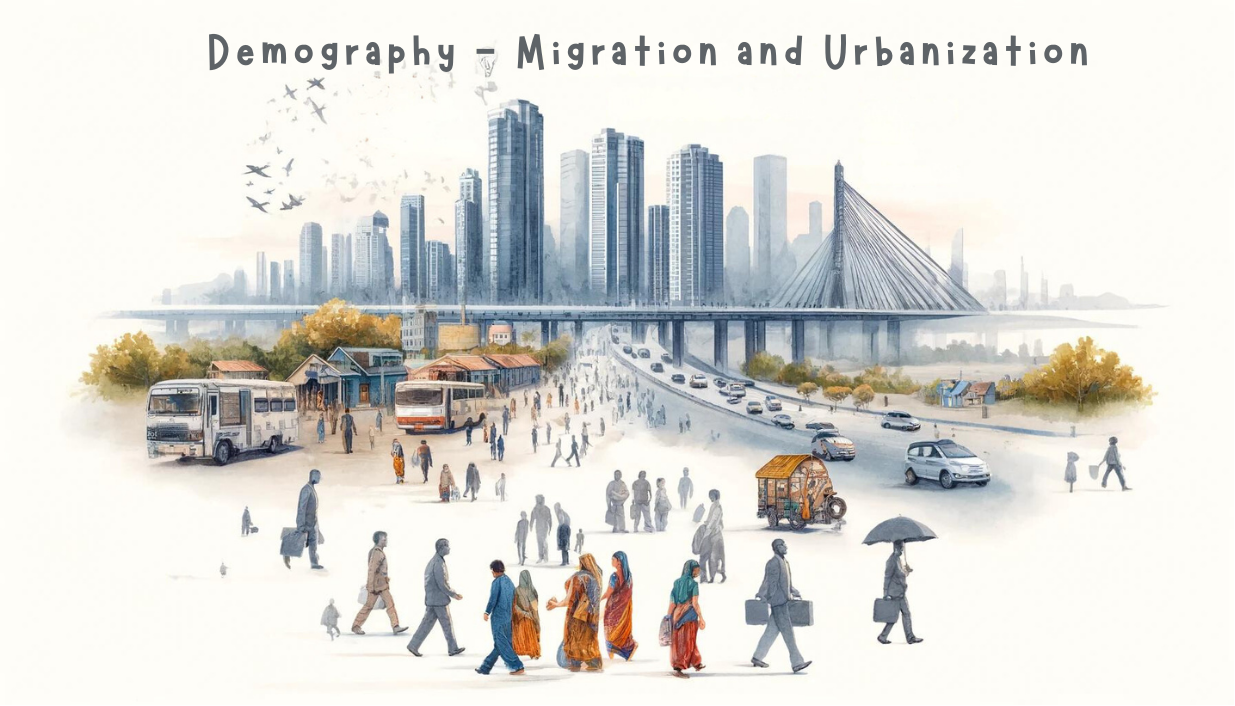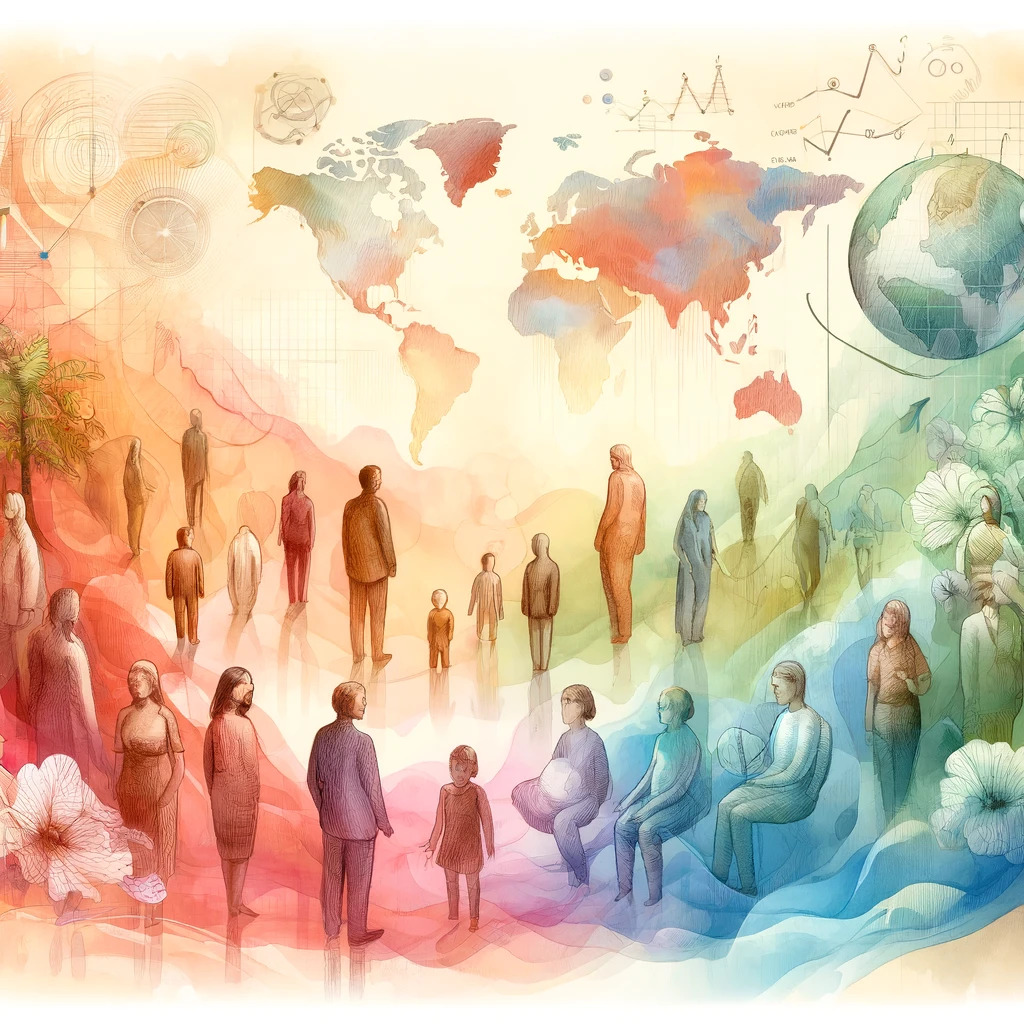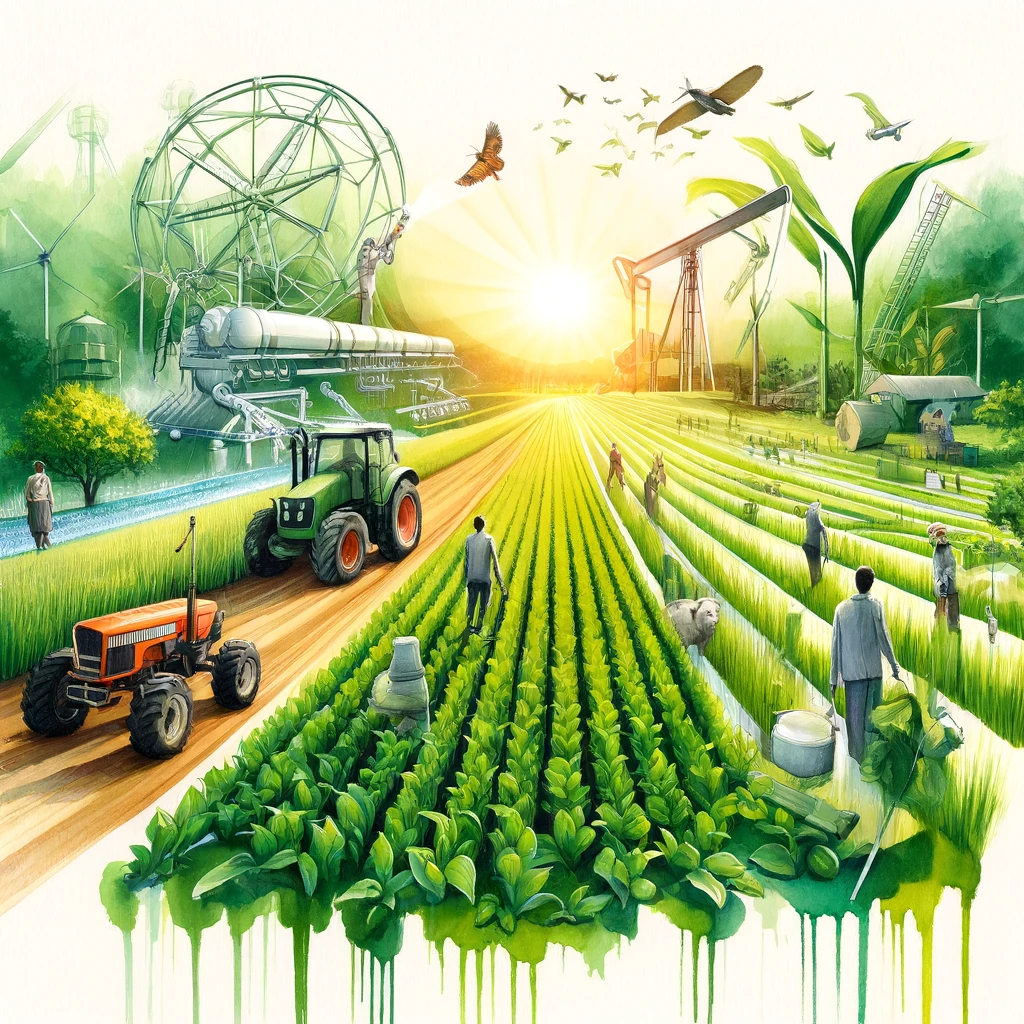Migration and urbanization are critical components of human geography that influence the socio-economic landscape of regions. Understanding the types, causes, effects, and trends of migration and urbanization is essential for effective policy-making and planning. This article explores these aspects in detail, with a focus on their relevance to India and the global context.

Types of Migration
Internal vs. International Migration
- Internal Migration: Movement of people within the same country. It includes rural-to-urban, urban-to-rural, and inter-regional migrations.
- International Migration: Movement of people across international borders. This can be permanent or temporary and is often influenced by factors such as employment opportunities, education, and political stability.
Voluntary vs. Forced Migration
- Voluntary Migration: Migration based on an individual’s free will and initiative, often in search of better economic opportunities, education, or lifestyle.
- Forced Migration: Migration due to external pressures such as conflicts, natural disasters, political persecution, or environmental degradation. Examples include refugees and internally displaced persons (IDPs).
Rural-Urban Migration
- This is the most common form of internal migration, driven by the search for better employment opportunities, education, healthcare, and living conditions in urban areas. It significantly contributes to the growth of urban populations.
Push and Pull Factors Influencing Migration
- Push Factors: Conditions that drive people away from their place of origin. These include unemployment, poor living conditions, political instability, and natural disasters.
- Pull Factors: Conditions that attract people to a new area. These include job opportunities, better living standards, political stability, and improved services and amenities.
Effects of Migration
Impact on Source Regions
- Economic Effects: Loss of working-age population can lead to labor shortages, reduced agricultural productivity, and economic decline. However, remittances sent by migrants can boost the local economy.
- Social Effects: Migration can lead to changes in family structures and social dynamics. It may also result in depopulation and aging populations in rural areas.
- Cultural Effects: Loss of cultural heritage and traditions as younger generations migrate to urban areas.
Impact on Destination Regions
- Economic Effects: Influx of labor can boost economic growth, fill labor market gaps, and contribute to the development of industries and services. However, it can also lead to increased competition for jobs and resources.
- Social Effects: Increased population density can strain infrastructure, housing, and public services. Migration can also lead to social integration challenges and cultural diversity.
- Cultural Effects: Introduction of new cultures, languages, and practices, which can enrich the cultural fabric of urban areas but may also lead to social tensions.
Issues Related to Migration
- Brain Drain: Emigration of skilled and educated individuals from developing to developed countries, leading to a loss of human capital in the source country.
- Remittances: Financial contributions sent by migrants to their home countries, which can support local economies but also create dependencies.
- Urban Sprawl: Unplanned expansion of urban areas into rural lands, leading to environmental degradation, loss of agricultural land, and increased infrastructure costs.
Urbanization Trends
Global Trends
- The world is experiencing rapid urbanization, with more than half of the global population living in urban areas. This trend is expected to continue, particularly in Asia and Africa.
- Mega-cities (cities with populations exceeding 10 million) are on the rise, with significant economic, social, and environmental implications.
Indian Trends
- India is witnessing significant urbanization, driven by rural-to-urban migration and natural population growth in cities.
- Major urban centers like Delhi, Mumbai, Bangalore, and Chennai are growing rapidly, posing challenges in terms of infrastructure, housing, and public services.
Causes of Urbanization
- Economic Opportunities: Availability of jobs, better wages, and diverse employment options in urban areas.
- Educational Facilities: Better access to educational institutions and higher education opportunities.
- Healthcare Services: Improved healthcare facilities and services in cities.
- Lifestyle and Amenities: Better living standards, entertainment, and social amenities attract people to urban areas.
Challenges of Urbanization
- Housing: Providing affordable housing to the growing urban population is a significant challenge, leading to the proliferation of slums.
- Infrastructure: Urban infrastructure, including transportation, water supply, and sanitation, is often inadequate to meet the demands of the growing population.
- Sanitation: Ensuring proper sanitation and waste management is critical to maintaining public health.
- Transportation: Traffic congestion and inadequate public transport systems are common issues in rapidly urbanizing areas.
Urban Settlements
Classification of Urban Settlements
- Towns: Smaller urban areas with limited economic and social infrastructure.
- Cities: Larger urban areas with more developed infrastructure and services.
- Metropolitan Regions: Large cities and their surrounding areas that form a continuous urban and economic region.
- Mega-Cities: Extremely large cities with populations exceeding 10 million.
Characteristics of Mega-Cities
- High population density and significant economic activities.
- Diverse social and cultural composition.
- Advanced infrastructure but often plagued with issues like traffic congestion, pollution, and socio-economic disparities.
Role of Urban Planning in Sustainable Development
- Urban planning is essential for the sustainable development of cities, ensuring balanced growth, efficient use of resources, and improved quality of life.
- Sustainable urban planning involves creating green spaces, promoting public transportation, ensuring affordable housing, and implementing effective waste management systems.
Government Policies on Urbanization
Smart Cities Mission
- Launched in 2015, the Smart Cities Mission aims to promote sustainable and inclusive cities that provide core infrastructure, a clean and sustainable environment, and a good quality of life to their citizens.
- Focus areas include smart solutions for water and energy management, urban mobility, e-governance, and digital infrastructure.
Atal Mission for Rejuvenation and Urban Transformation (AMRUT)
- AMRUT focuses on providing basic urban infrastructure such as water supply, sewerage, urban transport, and green spaces in cities.
- The mission aims to improve the quality of life for all urban residents, especially the poor and disadvantaged.
Pradhan Mantri Awas Yojana (PMAY)
- PMAY aims to provide affordable housing to all urban poor by 2022 through financial assistance and subsidies.
- The scheme focuses on promoting affordable housing through the Credit Linked Subsidy Scheme (CLSS) and encouraging public-private partnerships in housing projects.
Effectiveness of Policies
- These policies have had mixed results, with significant progress in some areas but challenges in implementation and coverage in others.
- Continued focus on integrated urban planning, robust governance frameworks, and active citizen participation is crucial for addressing urban challenges effectively.
Conclusion
Migration and urbanization are dynamic processes that shape the socio-economic and cultural landscape of regions. Understanding the types, causes, and effects of migration, along with urbanization trends and government policies, is essential for addressing the challenges and harnessing the opportunities these processes present. Effective planning and policy implementation can ensure sustainable and inclusive urban development, contributing to the overall growth and prosperity of nations.



